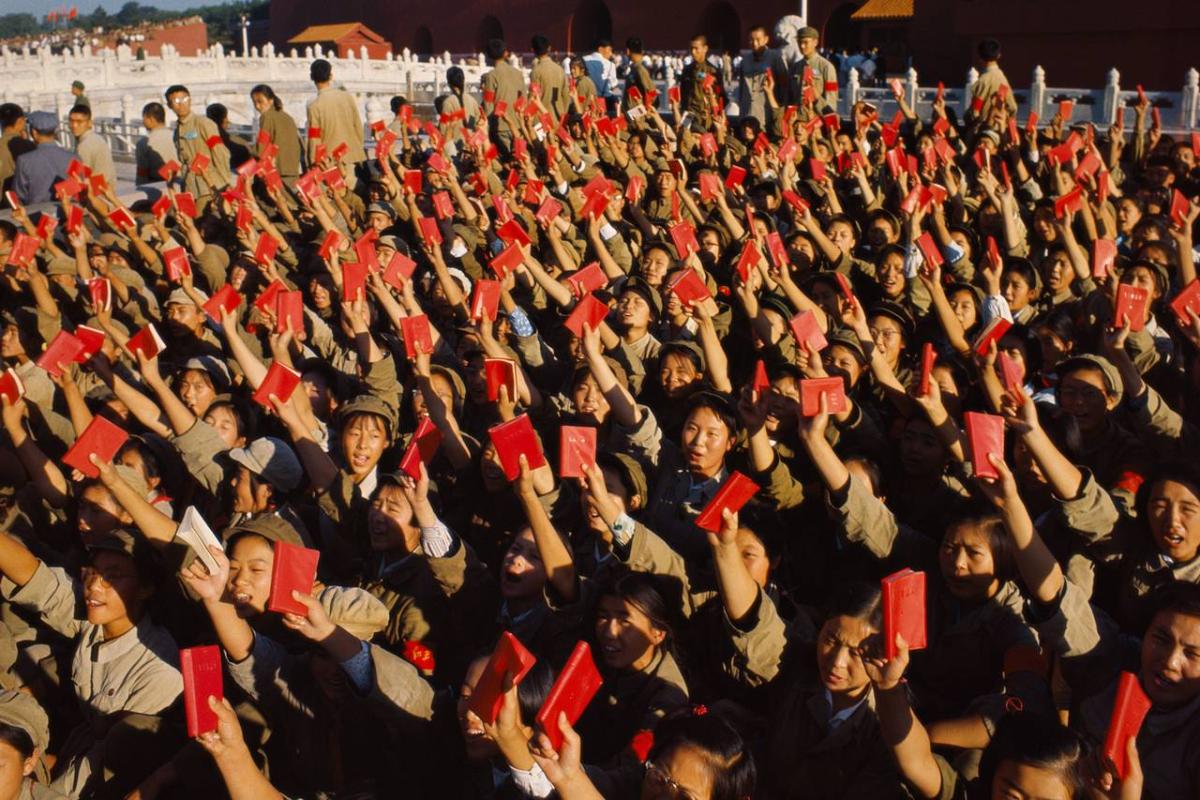This photograph is of Chinese Red Guards in Tiannamen Square. This picture perfectly exemplifies the aesthetics of collective conformity of the Cultural Revolution and the Red Guard, most notably the clothing choice and the little red book that they are clutching with their right hands. Uniformity in terms of clothing was something that was advocated in order to maintain the proletariat focus that Maoism presented and the Red Guard enforced. Having any sort of flashy clothes that were substantially different from the clothes everyone else wore was cause to be beaten, interrogated, jailed, persecuted, or killed. Hence, many wore a single set of army uniforms that were in line with what the Red Guard wore, and, as you can see in the picture, it is clear that they are all virtually wearing the same thing. There is no individuality, there is only one body. You are a part of the group, and the group is what defines you. Just by looking at this photo, there is no individuality in the aesthetic of this photograph. You don't see people as you would see in any other picture, you see a group that gives off an aura of being a monolith. In addition, the red book that they hold is also a concept of aesthetic collectivism. The red book stems from the original red book of quotations from Mao himself regarding all of his ideologies. He mass-produced that book and distributed it all around China to encourage the following of his new system of thought. In this picture and even in real life, the book was not just a collection of papers with words on it. The book became a sort of symbol of uniformity and conformity that needed to be followed by everyone. The amount of importance displayed in this image is that the book was the most important/valued thing of all. The way they all possess the book and hold it is comparable to how a religious leader holds up their religious text, giving it their importance. It's held up like a religious text. This symbol of ideological uniformity (the red book was embellished to appear as like a religious text to be followed while previous historical texts were to be destroyed) became a symbol of ideological conformity, with it being used to “purge” those who were “ enemies” or non-conformists of the ideology.
Cathcart, A. (2019, December 02). Explainer: What is Mao's Little Red Book and why is everyone talking about it? Retrieved October 12, 2020, from https://theconversation.com/explainer-what-is-maos-little-red-book-and-…


